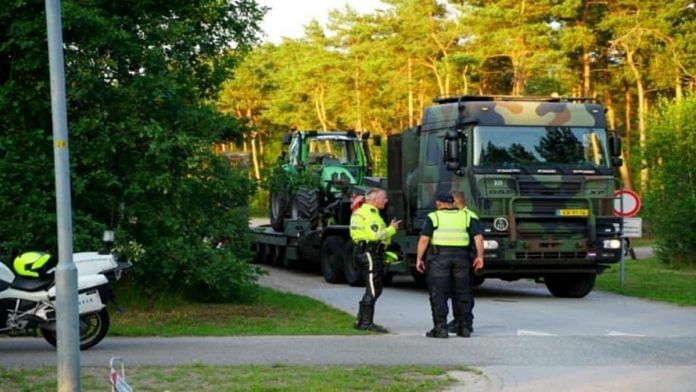New Delhi: Security services in the Netherlands have reportedly been pressed into action as farmers protest against the Dutch government’s decision to lower the cap on emissions for pollutant gases.
Photos shared on social media showed what appeared to be military vehicles towing away tractors of the protesting farmers, which had reportedly blocked traffic on major highways.
Some Twitter users sought to draw a comparison between the Dutch farmers’ protest and visuals that have emerged from Ukraine during the ongoing war, showing farmers using their tractors to tow away the Russian military’s tanks.
“The Dutch Army has deployed some of its Boxer APCs (armoured vehicles) to the ‘frontline’. The Farmers Defence Force (FDF), despite having more powerful tractors than their Ukrainian counterparts, has not yet attempted to tow them away,” wrote Oryx, a Dutch military blog with over 3.4 lakh followers.
#DutchFarmersProtests pic.twitter.com/xQohzEBWSb
— Oryx (@oryxspioenkop) June 29, 2022
Yet another successful operation from #Ukraine tractor brigade. Little green tractor abducting #Russia TOS-1 multiple rocket launcher pic.twitter.com/xtinJZ3WPI
— Lesia Vasylenko (@lesiavasylenko) May 15, 2022
Protesting farmers in the Netherlands have been holding demonstrations in different parts of the country, arguing that they are being made scapegoats while the contribution of other industries in rising pollution levels is being ignored.
They believe that the government’s emission caps are unviable and could threaten their livelihoods. As part of their protest, the farmers have been spreading manure on the streets, burning piles of hay and using their tractors to block highways and roads, resulting in massive traffic jams across the Netherlands.
The Dutch Army has deployed some of its Boxer APCs to the ‘frontline’.
The Farmers Defence Force (FDF), despite having more powerful tractors than their Ukrainian counterparts, has not yet attempted to tow them away. pic.twitter.com/redGmi62gU
— Oryx (@oryxspioenkop) June 29, 2022
?? Wtf, het leger sleept nu trekkers weg? ? pic.twitter.com/mJvid5Oih3
— Kees71 (@Kees71234) June 28, 2022
Also Read: How Netherlands plans to move to zero-emission deliveries by 2025
Why are Dutch farmers protesting
At the centre of the Dutch farmers’ protests are new emission standards for nitrogen oxide and ammonia — emitted by livestock, which are the lifeblood of the agriculture sector.
The ruling coalition in the Netherlands has laid down a plan to cut emissions of nitrogen oxide and ammonia by 50 per cent by 2030.
The government has further stressed that emissions must be brought down close to natural areas that are “part of a network of protected habitats for endangered plants and wildlife” stretching across the European Union.
Describing it as an “unavoidable transition”, the ruling coalition was reportedly forced to introduce these measures by court rulings that blocked infrastructure and housing projects on the grounds that they were leading to the Netherlands missing its emission targets.
But Dutch farmers fear that these new targets could have drastic consequences for their livelihoods.
On Tuesday, protesting farmers were seen using their tractors to break down police lines near the home of Christianne van der Wal-Zeggelink, who, as Minister for Nature and Nitrogen Policy in the Dutch government, has been tasked with bringing down the country’s pollution levels.
Condemning the farmers’ protests while at the NATO summit in Madrid, Dutch Prime Minister Mark Rutte said Wednesday: “You can demonstrate, but in a civilised way. So, don’t block highways, don’t set off fireworks outside a minister’s house, and spread manure and… scare two children, and endanger families.”
(Edited by Amrtansh Arora)
Also Read: Fate of Russian armour in Ukraine not encouraging but premature to write off the tank



